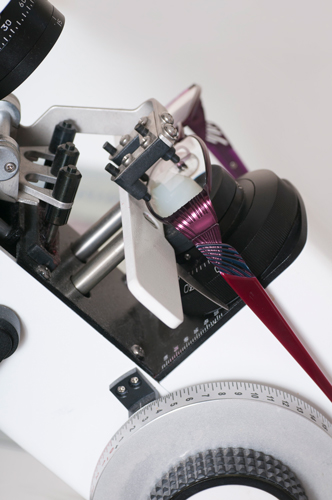Hands-on
 Many people are drawn to opticianry because it is a patient-centered, fashion-forward, healthcare embedded, and strong hands-on component profession. There are few careers that have such a rich and diverse mix of knowledge and skill sets. Where can you transform someone’s appearance and help enhance and improve what they see in the world? All while simultaneously restoring an ophthalmic frame after “somebody” accidently sat on them. And let’s not forget the hummmm of the edger grinding lenses that will be inserted into a frame and checked for accuracy within ANSI standards on a lensometer. These skills require hands-on proficiency. How does one become proficient in these skills? Opticianry is a hands-on profession. It takes lots of practice to be proficient in the many tasks we do in a given day, week, or month. What is your role? Are you new to the profession either as a student or an apprentice? Or are you a seasoned professional who needs to take new employees or student interns under your wing, showing them the ropes? Wherever you fall on this continuum, you play a role as a learner or teacher.
Many people are drawn to opticianry because it is a patient-centered, fashion-forward, healthcare embedded, and strong hands-on component profession. There are few careers that have such a rich and diverse mix of knowledge and skill sets. Where can you transform someone’s appearance and help enhance and improve what they see in the world? All while simultaneously restoring an ophthalmic frame after “somebody” accidently sat on them. And let’s not forget the hummmm of the edger grinding lenses that will be inserted into a frame and checked for accuracy within ANSI standards on a lensometer. These skills require hands-on proficiency. How does one become proficient in these skills? Opticianry is a hands-on profession. It takes lots of practice to be proficient in the many tasks we do in a given day, week, or month. What is your role? Are you new to the profession either as a student or an apprentice? Or are you a seasoned professional who needs to take new employees or student interns under your wing, showing them the ropes? Wherever you fall on this continuum, you play a role as a learner or teacher.Teaching hands-on skills must allow for the varied learning style preferences of the student or employee. Some learners need to get an overview of the process first, and then attempt to try it; while others prefer to read about the steps and take in every detail before they explore doing the activity.
Lensometry Example
An example of teaching a hands-on procedure is how to operate a vertometer/lensometer.
There are four steps for teaching most hands-on activities:
1. Terminology
2. Function
3. Procedure
4. Practice
The learner needs to first know the terminology, the parts, to be able to identify them and know what the parts are used for.
There are many YouTube or training video tutorials in which the teacher can show the learner functionality; the how and the why we do lensometry.
The teacher then can demonstrate lensometry for the learner, showing them without commentary; allowing them to observe proficiency.
Next, the teacher can demonstrate talking through the steps, allowing for note taking and questions.
The teacher can neutralize a pair of single vision spectacles or uncut lenses, allowing the learner to provide the steps verbally to the teacher.
The learner can now attempt the skill with the teacher observing, taking notes for feedback, and answering questions.
The learner has multiple opportunities to practice the skill with immediate feedback.
The learner also is provided written step-by-step instructions
There are two things that the teacher must be aware of:
The learner needs to know the “why” of the skill. Why is this done and for what purpose?
Constructive feedback must be provided early and often.
Someone learning a new hands-on skill such as lensometry may have barriers to picking up the skill that the teacher would need to support. Such barriers include: anxiety, lack of confidence, or insecurity. The instructor needs to have or develop empathy and create an environment of encouragement. A teacher is really more like a coach or a mentor. No one likes to be ridiculed or shamed for not catching on quickly enough. And remember, never compare your learner with others.
Finally, allow for multiple opportunities to apply this new found skill; even if it slows you down, as the future of opticianry depends on it.













